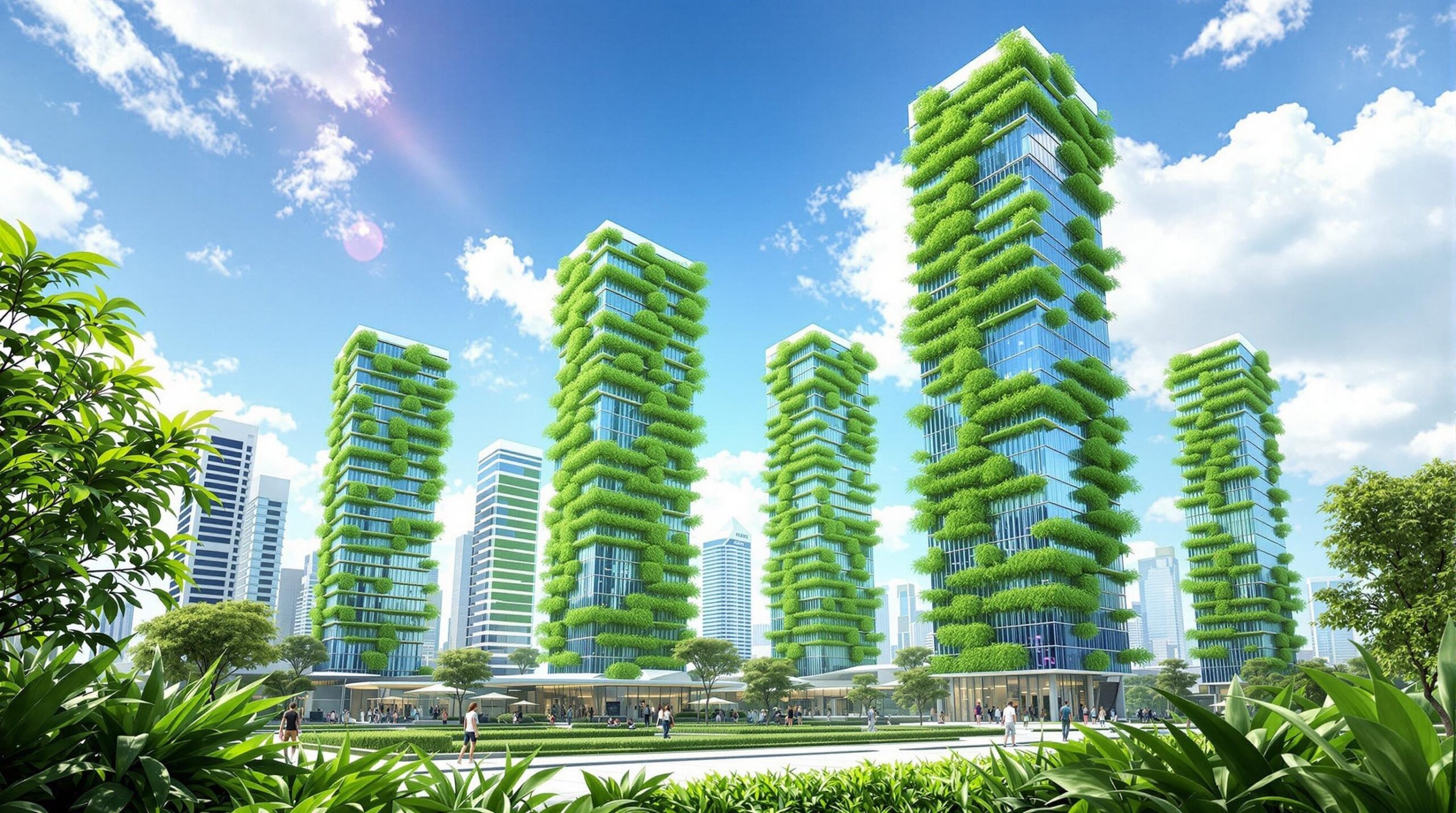The quest for sustainable urban living is driving innovation in architecture. Algae-powered buildings are emerging as a promising solution. By harnessing the natural processes of microalgae, these structures aim to revolutionize urban landscapes.
The Science Behind Algae Power
Algae, an incredibly diverse group of photosynthetic organisms, have existed for billions of years. They range from microscopic plankton to giant kelp. These organisms absorb carbon dioxide and produce oxygen during photosynthesis. Unlike their plant counterparts, algae grow rapidly and efficiently in various environments. Their rapid growth makes them an ideal candidate for sustainable energy solutions.
Microalgae can produce biomass converted into biofuels, such as biodiesel and bioethanol. Algae photobioreactors can capture sunlight and convert CO2 into energy when integrated into building facades. This process simultaneously helps reduce the building’s carbon footprint by absorbing greenhouse gases.
Algae as a Renewable Energy Source
The potential of algae as a renewable energy source has gained interest worldwide. Traditional energy systems rely heavily on fossil fuels. In contrast, algae-based systems use a straightforward, sustainable approach. They can continuously absorb carbon emissions while generating usable energy. Algae-powered systems might mitigate environmental damage in urban areas.
These green systems can reduce dependency on traditional energy sources. Algae can also serve as an on-site source of renewable energy. Algae-based energy contributes to sustainable urban environments by, for example, powering lights and heating water.
Design and Functionality of Algae-Powered Buildings
In algae-powered buildings, photobioreactors are designed to fit seamlessly into facades. These transparent or translucent panels house microalgae cultures and facilitate photosynthesis. As sunlight enters the panels, algae absorb CO2 and produce energy. The generated biomass can later be harvested as biofuel.
Incorporating algae photobioreactors into building designs requires thoughtful engineering. Architects and engineers must consider climate conditions to maximize algae growth. Moreover, reliable systems for harvesting and processing algae biomass are crucial for efficiency. The goal is to integrate nature, technology, and design elegantly.
Economic and Environmental Benefits
Algae-powered buildings offer substantial environmental benefits by reducing carbon footprints. They actively contribute to cleaner air in urban areas. By absorbing carbon emissions, these buildings can improve overall air quality. This characteristic is vital in densely populated cities with high pollution levels.
Economically, algae-based systems provide cost savings in energy consumption. Over time, reduced energy bills can offset the initial investment in photobioreactors. Algae production can also open new revenue streams through biofuel sales.
Challenges and Considerations
Despite their advantages, algae-powered buildings face several challenges. First, the costs of developing and maintaining algae systems can be significant. Initial investments in specialized photobioreactors may deter some developers. Furthermore, ensuring consistent and optimal algae growth requires meticulous attention to environmental conditions.
Maintenance and operational efficiency are other considerations. For algae-powered systems to be viable, they must operate without significant interruptions. Research and technological advancements are crucial to overcoming these challenges. Scientists and engineers continue to work on making algae power accessible and feasible for urban use.
Innovative Examples Worldwide
Some pioneering projects have demonstrated the potential of algae-powered buildings. BIQ House in Hamburg, Germany, is a notable example. The building employs an algae facade system that generates energy and heat. This eco-friendly project showcases how algae-integrated architecture can function effectively.
In Switzerland, the SolarLeaf bioreactor facade has generated interest. Designed for future housing projects, it aligns with the goals of the EU-funded Smart Living Buildings Program. These examples highlight the possibilities for broader adoption of algae-powered design worldwide.
The Future of Algae in Urban Architecture
As global populations continue to urbanize, sustainable architecture becomes increasingly crucial. Algae-powered buildings may be an integral part of future cityscapes. With technological advancements, algae energy systems could become more cost-effective and widespread. Transitioning from fossil-fuel dependency offers long-term economic benefits.
Moreover, algae-powered buildings align with broader goals of sustainability and emissions reduction. By integrating these systems into urban planning, cities can advance towards a carbon-neutral future. These innovations are pivotal in addressing climate change.
Concluding Thoughts
The potential of algae-powered skyscrapers is a promising step towards sustainable urban living. Challenges remain, but ongoing research fosters hope for innovations in architecture and energy. Algae offer unique benefits, and their integration into modern buildings may redefine eco-friendly urban design.
The dream of eco-friendly skyscrapers powered by nature comes closer with continuous progress. Optimizing algae energy systems could inspire further architectural innovations worldwide. Harnessing nature’s power in cities symbolizes a future where urban spaces harmonize with the environment. Algae-powered buildings could transform tomorrow’s skylines, showcasing a commitment to sustainability.

